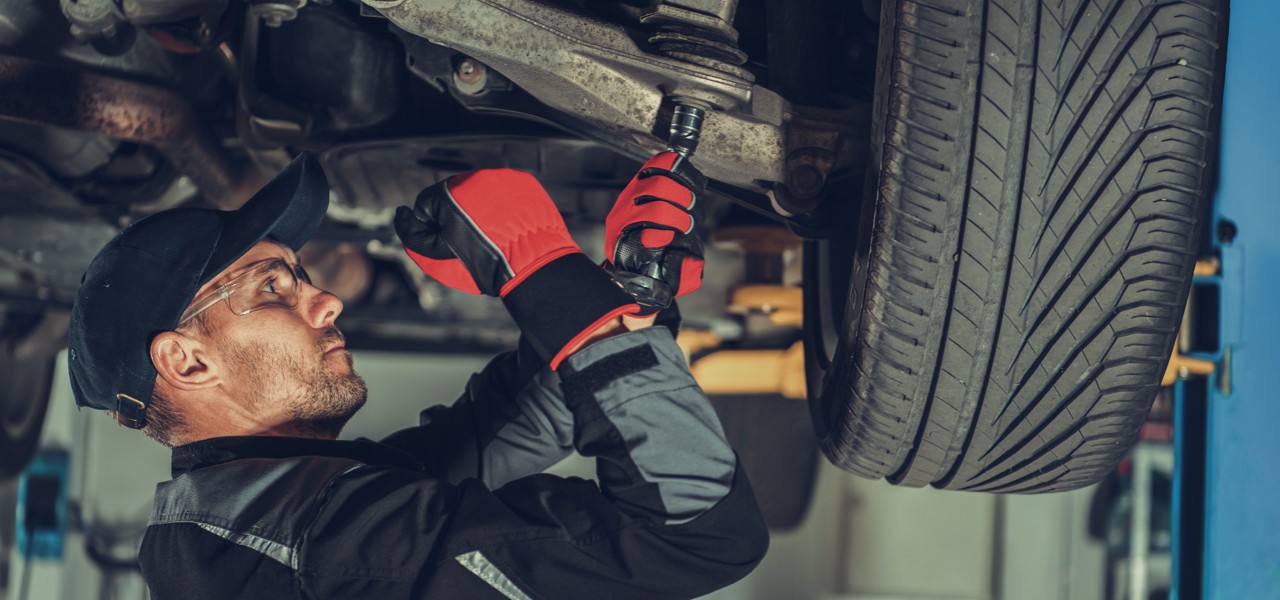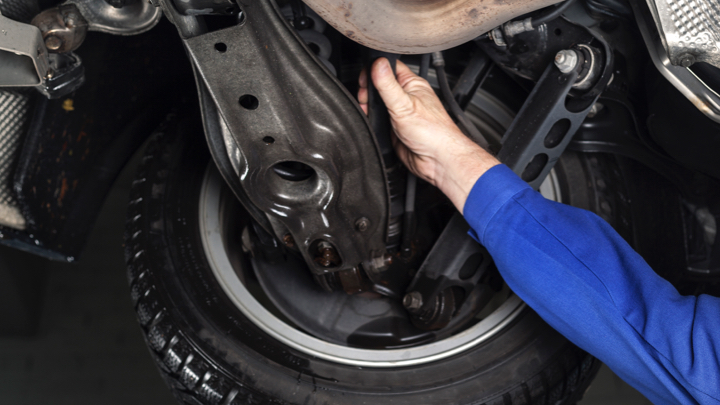
Diagnosing Noise With New Shocks and Struts
Issue
Hearing a metallic clunking noise when driving over bumps is a common reason for customer comebacks after having shocks or struts replaced. They are likely concerned that their new shocks or struts are bad. There are some easy steps you can take to put their minds at ease and take care of the noise.
Diagnosing the Problem

There is most likely nothing wrong with the replacement shock or strut, but a metallic clunking noise typically indicates loose or worn mounting hardware. A loose mount can allow movement between the bolt and attaching parts, while a mount that is worn can cause the shock/strut to move up and down. When replacing shocks or struts, installing new mounts and mounting hardware is always recommended.
Closely examining the vehicle is required to find the source of the problem. Start by checking the components that attach the shock or strut to the vehicle. Remember that looks can be deceiving; a mounting or bushing can appear to be tight but allow movement when driving.
Noise With a Shock Absorber
If the noise is present with a replacement shock absorber, check that the mountings are tightened securely, and look for other worn suspension parts. Some shock absorbers utilize a "clevis" type mount, which must squeeze the sides of the shock's "mounting sleeve" very securely in order to prevent noise. Using new hardware and mounting bolts help ensure it’s tightened securely. Check the brackets to make sure they didn’t get spread apart excessively when the original shock was removed.
Noise With a Strut
If the noise occurs while driving over bumps with a strut, then the upper mounting plate should be inspected and replaced if necessary. If the noise occurs while turning, then the upper bearing assembly should be inspected and/or replaced. When inspecting strut mounting hardware, many of these types of components can stretch or deform if over-torqued or if they have been loosened and retightened multiple times, resulting in a noise. If mounting hardware no longer holds their original torque, or if they are excessively worn, they should be replaced.
Learn more about quality suspension parts, find the right car part, or find a local repair shop today.
The content contained in this article is for informational purposes only and should not be used in lieu of seeking professional advice from a certified technician or mechanic. We encourage you to consult with a certified technician or mechanic if you have specific questions or concerns relating to any of the topics covered herein. Under no circumstances will we be liable for any loss or damage caused by your reliance on any content.